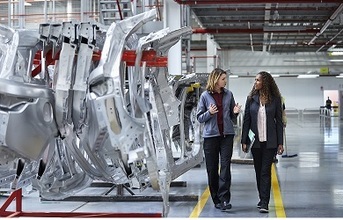
Purdue University innovators hope new technology provides a more business-friendly option to utilize sustainable cellulose nanomaterials for use in vehicles, food packaging and other manufactured items. (Stock image courtesy of Purdue)
Purdue University innovators have come up with a new technique for polymer manufacturing with reduced solvents aimed at vehicle, packaging production nanomaterials-vehicles. These innovators are hoping that the new technology provides a more business-friendly option to utilise sustainable cellulose nanomaterials for use in vehicles, food packaging and other manufactured items.
The Purdue team has developed a new way for manufacturers to use nanocellulose - a green nanomaterial derived from natural sources such as plant matter. Normally to process nanocellulose, solvents or other dispersants are usually added to the mixture to improve the material's dispersion in polymers.
"These methods can be very expensive for manufacturers, who must add additional processes and machinery to comply with emission standards that may be impacted by the use of the solvents," said Jeffrey Youngblood, a professor of materials engineering in Purdue's College of Engineering.
The Purdue innovators created a method that involves mixing the nanocellulose in additives for the polymer material, such as plasticizer, and then compounding that mixture into the polymer instead of directly mixing them.
This technique could be applicable to a wide variety of polymers, including nylons used in the automotive industry and polylactic acid and ethylene vinyl alcohol copolymer used in food packaging. It enables nanocellulose to be easily extruded or injection molded into useful products with better properties that are more sustainable.
"We created a way to use the additives that are normally in polymers as the ‘solvent' to disperse the nanocellulose during melt processing," Youngblood said. "In this way, you still have increased properties, but without the pieces of the manufacturing process that require additional emissions-lowering components. This makes the process of using the nanocellulose, which is biodegradable, more sustainable as well."
Youngblood said the main advantages to the Purdue technique for large-scale polymer production are:
Solvent-free compounding of nanocellulose into polymers.
Homogenous mixture of hydrophilic nanocellulose and hydrophobic polymer.
The innovators have worked with the Purdue Research Foundation Office of Technology Commercialization to patent the technology.
END


























